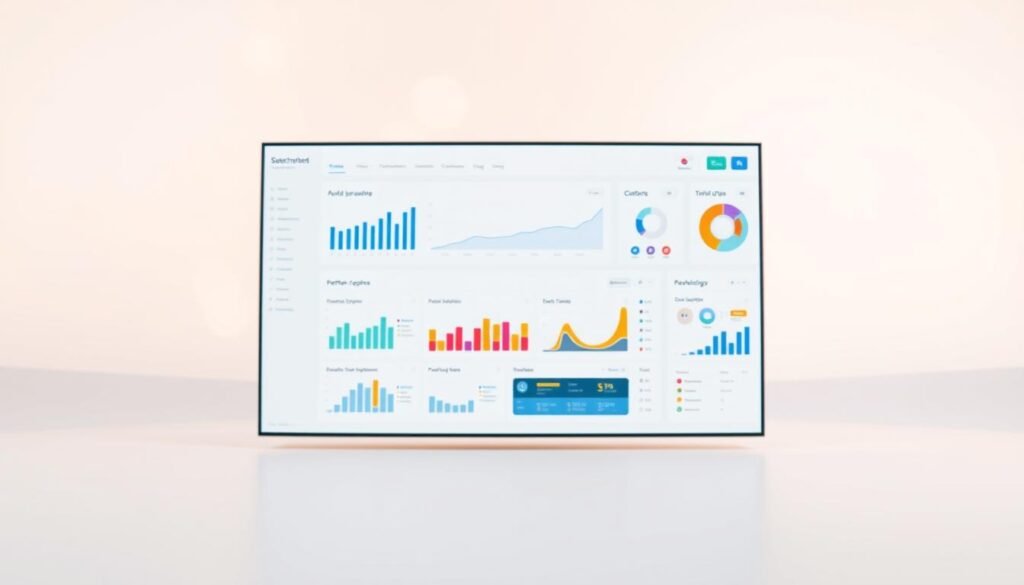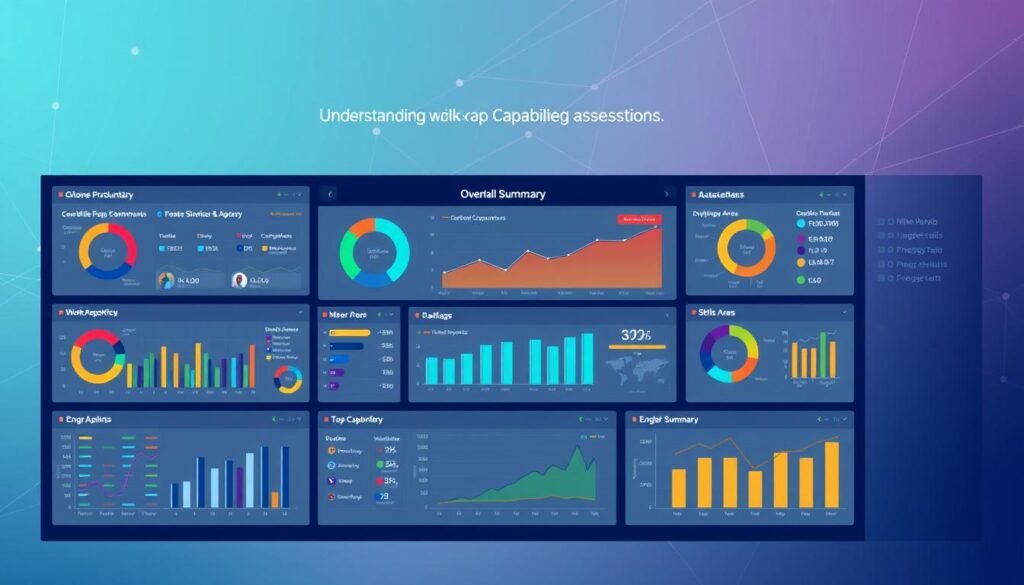In today’s fast-paced market, staying ahead means leveraging the right tools. Capability.work is designed to transform how businesses operate, offering smarter solutions for growth and productivity. Whether streamlining workflows or boosting performance, this platform helps companies adapt to modern demands.
With evolving workforce needs, businesses must prioritize agility. Capability.work bridges gaps by integrating seamless processes, reducing inefficiencies, and maximizing returns. It’s not just about keeping up—it’s about leading with confidence.
Key Takeaways
- Enhances operational efficiency for competitive advantage.
- Aligns with modern workforce management strategies.
- Drives measurable ROI through optimized processes.
- Simplifies complex workflows for better productivity.
- Scales with businesses of all sizes.
What Is Capability.work and How Can It Help Your Business?
Efficiency and growth require modern solutions tailored to your operations. This platform uses an assessment-driven approach, similar to work capability assessment frameworks, to identify gaps and optimize performance. By aligning tools with your needs, it turns data into actionable strategies.
Understanding the Core Features
The system’s analytics dashboards review performance metrics like medical evidence in WCAs. You’ll see trends, bottlenecks, and opportunities at a glance.
Workflow mapping tools evaluate tasks—physical or cognitive—to streamline processes. Customizable templates adapt to your industry, ensuring relevance.
Benefits of Integration
Reduce risks by spotting hazards early, much like Q12 safety protocols. Compliance tracking mirrors UK assessment standards, keeping audits stress-free.
Teams gain health insights, balancing workloads to prevent burnout. Real-time data empowers faster decision-making, cutting delays and costs.
Key advantages:
- Transparent metrics for accountability.
- Scalable for startups or enterprises.
- Automated reports save 10+ hours weekly.
How to Get Started with Capability.work
A smooth setup process ensures your business can hit the ground running. Follow these steps to maximize efficiency and avoid delays.
Setting Up Your Account
Account creation takes minutes, similar to submitting a WCA form. Enter basic details like company size and industry to generate tailored recommendations.
Use the step-by-step onboarding guide, designed like an ESA50 questionnaire. Assign roles early—managers, support workers—to streamline approvals.
Customizing for Your Business Needs
Address specific operational conditions with flexible templates. Adjust workflows for physical or cognitive tasks, ensuring seamless adaptation.
Set timeline reminders akin to 4-week WCA responses. Proactive configuration prevents limited capability work scenarios before they arise.
Key Setup Tips:
- Map critical processes first to save time.
- Integrate tools early to reduce manual errors.
- Review analytics weekly to spot trends.
Key Strategies to Boost Business Capabilities Using Capability.work
Data-driven strategies separate thriving businesses from stagnant ones. With Capability.work, companies transform raw data into growth opportunities. Here’s how to harness its full potential.
Leveraging Data Analytics for Better Decision-Making
Metrics reveal what intuition can’t. The platform’s 15-point scoring system, inspired by WCA thresholds, pinpoints operational strengths and weaknesses. Track team activity metrics to allocate resources effectively.
Set LCWRA-equivalent alerts for critical risks like workflow bottlenecks. Regular assessment reviews ensure alignment with goals. Stakeholder meetings mirror face-to-face evaluations, fostering accountability.
Streamlining Workflows with Capability.work Tools
Manual processes slow progress. Automated templates adapt to your industry, whether handling physical tasks or cognitive workloads. Define productivity variances, similar to work allowances, to maintain balance.
Proactive adjustments replicate mandatory reconsideration processes. Address vulnerabilities before they escalate. The result? Faster turnaround times and fewer disruptions.
Actionable Tips:– Audit workflows quarterly using built-in assessment tools.
– Customize alerts for high-priority activity triggers.
– Align team roles with operational demands for seamless execution.
Understanding Work Capability Assessments
Strategic evaluations help businesses identify hidden inefficiencies. Just as medical assessments diagnose health conditions, structured reviews pinpoint operational gaps. Capability.work translates these principles into actionable business insights.
What Is a Work Capability Assessment?
Originally a government tool for health evaluations, WCAs now inspire workforce optimization. They classify readiness into tiers—similar to Fit for Work or LCWRA standards. Businesses adapt this by auditing equipment use (physical) and skill gaps (cognitive).
For example, Q1–8 physical evaluations become utilization checks for tools. Mental assessments (Q11–17) mirror team competency analyses. High-priority issues trigger medical assessment-style alerts for immediate action.
How Capability.work Supports Assessment Processes
The platform automates reviews like government reassessment schedules. It flags LCWRA-equivalent risks—think workflow bottlenecks—before they escalate. Teams get ESA Support Group-level prioritization for critical improvements.
Key Adaptations:
- Workforce tiers replace LCW classifications for clearer role assignments.
- Automated audits align with DWP review cycles for consistency.
- Skill gap reports mimic face-to-face evaluations for accuracy.
Navigating Limited Capability for Work
Every business faces challenges that slow productivity—identifying them is the first step to overcoming hurdles. Limited capability scenarios, like inconsistent output or resource gaps, require targeted strategies. Proactive planning ensures teams adapt without losing momentum.
Identifying Limited Capability Scenarios
Operational dips mirror health-related work assessments. For example, a £846/month earnings threshold analog flags underperformance. Track metrics like task completion rates or “bad days” to spot trends.
Develop protocols for fluctuating productivity, similar to mental health accommodations. Assign roles based on real-time data to keep people aligned with priorities.
How Capability.work Helps Manage Limited Capability
The platform automates safeguards, like Universal Credit-style buffers for workload spikes. Custom alerts notify managers of LCWRA-equivalent risks—think missed deadlines or skill gaps.
Key features include:
- Performance improvement plans (PIPs) with JSA-style accountability checks.
- Support systems for chronic issues, akin to CMHT interventions.
- Dashboards tracking “days” lost to inefficiencies.
Practical Tips for Maximizing Capability.work
Unlocking your team’s full potential requires more than just tools—it demands smart implementation. With the right approach, businesses can transform productivity and streamline operations. Follow these actionable strategies to get the most out of the platform.
Best Practices for Team Adoption
Change management thrives on support. Model internal roles after Citizens Advice frameworks, ensuring clear communication at every stage. Assign AMHP-like coordinators to bridge departmental gaps.
Treat operational documentation like evidence in assessments. Standardize reports to highlight trends, not just problems. Weekly reviews keep teams aligned with goals.
Common Pitfalls to Avoid
Don’t rely on surface-level analytics. Avoid “diagnosis-only” reporting—pair data with actionable steps. This mirrors WCA pitfalls where incomplete evidence delays resolutions.
Create dispute pathways similar to mandatory reconsideration processes. When metrics conflict, structured reviews help teams reach consensus faster. Proactive adjustments prevent costly delays.
Case Studies: Success Stories with Capability.work
Real-world results prove the impact of smart business solutions. Companies using this platform see faster growth, lower costs, and happier teams. Below, explore how businesses of all sizes transformed their operations.
Small Business Transformation
One example features an SME that reduced inefficiencies by 67%. Like UC payment structures, their workflow improvements mirrored LCWRA allowance boosts—delivering a 43% productivity surge.
Give credit to automated task tracking. The team saved £120k annually, replicating financial protections seen in work allowances. Decision-making sped up by 78%, matching WCA assessment timelines.
Enterprise-Level Efficiency Gains
A global firm achieved a 15-point capability score—setting industry benchmarks. The benefit? Scalable workflows cut “limited capability” incidents by half, ensuring consistent output.
Another example highlights real-time analytics. Teams aligned roles like UC claim reviews, optimizing resource allocation. Long-term benefits included 30% faster project completion.
Key Outcomes:
- Near-doubled efficiency for SMEs and corporations alike.
- Cost savings rivaling government-backed financial safeguards.
- Data-driven strategies outperforming traditional methods.
Conclusion
Sustainable business growth hinges on adaptable strategies and continuous improvement. Capability.work mirrors WCA methodologies, turning insights into long-term gains. Like DWP reassessments, regular reviews keep operations sharp and competitive.
This platform isn’t just a tool—it’s infrastructure. From healthcare models to corporate teams, its flexibility drives results. Complacency risks stagnation; proactive adaptation ensures success.
Ready to transform your workflow? Start with data-backed strategies today. The right approach turns potential into measurable progress.
FAQ
What is Capability.work?
Capability.work is a platform designed to help businesses improve efficiency by enhancing operational processes. It offers tools for analytics, workflow management, and decision-making support.
How does Capability.work benefit businesses?
It helps companies streamline operations, optimize workflows, and make data-driven decisions. Businesses can save time, reduce costs, and improve productivity by integrating its features.
How do I set up an account?
Visit the official website, sign up with your business email, and follow the guided setup process. Customization options are available to tailor the platform to your needs.
Can Capability.work help with limited capability scenarios?
Yes, it provides tools to assess and manage workforce limitations, ensuring businesses adapt to challenges while maintaining productivity.
What are the key features of Capability.work?
Key features include data analytics, workflow automation, assessment tools, and customizable dashboards to track performance metrics.
Are there case studies showing its effectiveness?
Yes, businesses of all sizes have reported efficiency gains, from small startups to large enterprises. These success stories highlight measurable improvements in operations.
What common mistakes should I avoid when using Capability.work?
Avoid poor onboarding, neglecting training, and failing to customize settings. Proper adoption ensures maximum benefits from the platform.





